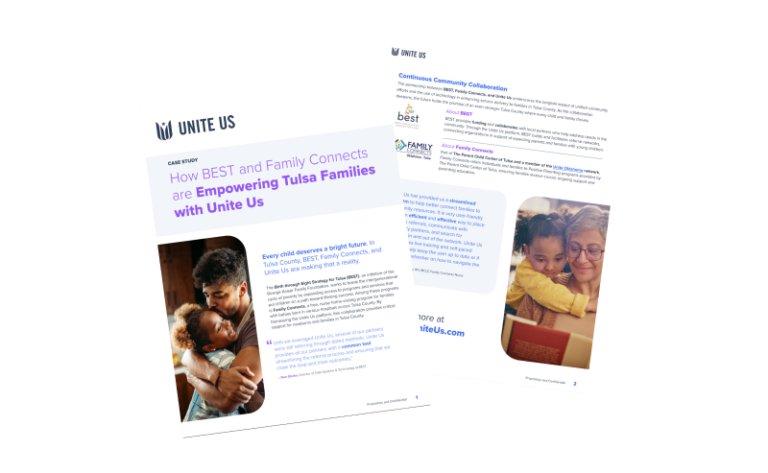
The Healthcare Provider’s Guide for Addressing Social Determinants of Health (SDoH)
By: Courtney Pellegrini, Senior Manager, Product MarketingHow to overcome challenges and create a successful strategy for addressing SDoH.
Is it a hospital’s responsibility to screen for and address a patient’s social care needs?
The answer is “yes.” New CMS requirements are beginning to require that hospitals screen patients for social determinants of health (SDoH) needs such as food, transportation, and housing.
With this in mind, CMS’ health equity data requirements will now motivate provider organizations to collect social risk measures the way they have long collected clinical risk measures, like elevated blood pressure readings. CMS-approved SDoH screening measures will help, but it can still be difficult to get a comprehensive understanding of a patient’s whole-person needs.
While social care screenings are often a great first step towards providing whole-person care, healthcare providers also need to be properly equipped to address the needs that may be uncovered in those screenings. How can providers build an effective strategy for addressing SDoH to serve the non-clinical health needs of their patients and local communities?
The Cost of Unaddressed SDoH
Eighty to 90 percent of health outcomes are due to behavioral, social, or environmental factors that go beyond clinical care, including socioeconomic status, race, nutrition, housing security, transportation, and more. For this reason, health inequity has a powerful influence on factors that influence health. The consulting firm Deloitte estimates that health inequities cost the U.S. $320 billion per year and could rise to $1 trillion by 2040 if unaddressed. At an individual, family, or community level, the toll on health, quality of life, and well-being is just as profound.
When physicians, nurses, public health officials, and others in the healthcare field encounter a patient or member who faces challenging environmental circumstances, they know it’s very likely the care they provide will not be enough to meet that person’s overall needs. After the appointment or care encounter, the patient may return to the same environment that caused or exacerbated their health problems in the first place, and that environment can present barriers to their recovery.
Consider this example: A patient who is unable to manage his diabetes becomes a frequent visitor to the emergency department. Concerned, the physician takes the initiative to apply for a grant that enables him to assign a community health worker to the patient’s case. The health worker discovers the patient is experiencing homelessness and has no place to store his insulin. The community health worker can then connect the patient to a local shelter, where he is able to stay and store his insulin.
Identifying that patient and connecting him to the right social resources helped improve his health outcomes and reduce the burden on the local hospital. The bigger challenge, however, is achieving that kind of impact systematically and at scale.
5 Barriers to Addressing SDoH
Here are five common barriers to addressing SDoH needs, and how healthcare practices can overcome them:
- Determining where to begin – One of the biggest challenges with addressing social care needs is not knowing quite how, or where, to start. Partnering with industry experts gives providers the guidance, support, and peace of mind they need to get this initiative off the ground.
- De-siloing information – When patient data is siloed in disparate systems and inaccessible across different organizations, delivering whole-person care becomes exceedingly difficult. Organizations responsible for delivering health and social services need to be able to communicate and share data securely and efficiently in order to drive better health outcomes. Without a holistic view of a patient’s health journey, it is impossible to make fully informed decisions about their care.
- Making workflows efficient – Manual processes and inefficient workflows are both time-consuming and error-prone, posing significant risks when it comes to effectively addressing social care needs. If patient information is misrecorded or miscommunicated, it can directly impact the safety and efficacy of patient care plans. Social care technology that fosters interoperability and workflow automation plays a pivotal role in driving successful and scalable social care outcomes.
- Resourcing teams – There’s projected to be a shortage of 3.2 million healthcare workers by 2026. With a growing shortage of healthcare workers and increasing levels of provider burnout, addressing social needs will become more challenging without technology that seamlessly automates and accelerates the SDOH screening and referral process. Plus, social care technology vendors that offer professional care coordination services can alleviate the administrative burden to facilitate more connections to care.
- Shared accountability – Social care referrals result in connections to care only if they’re sent to organizations with the resources, capacity, and bandwidth to solve those needs. When social care networks require accountability from their partners, there is a much greater chance of successfully connecting patients to resources. Without such accountability, listings may be out of date, and it can be difficult for providers and patients alike to gauge resource availability and a patient’s eligibility for those resources.
How Can Providers Address SDoH?
So, what can healthcare providers do once a social care need is identified?
Given that needs and circumstances can vary widely, it can be difficult to find the right resources or services to help the patient.
Unite Us is the nation’s leading software company bringing sectors together to improve the health and well-being of communities. We drive the cross-functional collaboration needed to identify, deliver, and pay for services that impact whole-person health. This enables network partners to work together and meet complex individual, family, and community social health needs.
Just as importantly, the Unite Us Platform allows for closed-loop referrals, enabling partners to securely track a patient’s progress to confirm they’re receiving the right care and measure the resulting health outcomes.
The Value of Closed-Loop Referrals For Addressing SDoH
Closed-loop referrals ensure that rendered social services actually meet patient needs and move the needle on health outcomes. This will become increasingly paramount for providers to track as CMS continues to make it mandatory for providers to assess and address SDoH needs. Plus, as commercial health plans engage more in value-based care, they will also require healthcare providers to have the capabilities and resources to handle this complex set of challenges.
Now is the time for providers to prepare for that future. With the right technology and network, providers can position themselves for efficiency and success when addressing SDoH and looking to improve whole-person health outcomes.
Learn more about how Unite Us helps healthcare providers successfully address social determinants of health
About Unite Us
Unite Us is the nation’s leading software company bringing sectors together to improve the health and well-being of communities. We drive the collaboration to identify, deliver, and pay for services that impact whole-person health. Through Unite Us’ national network and software, community-based organizations, government agencies, and healthcare organizations are all connected to better collaborate to meet the needs of the individuals in their communities.



